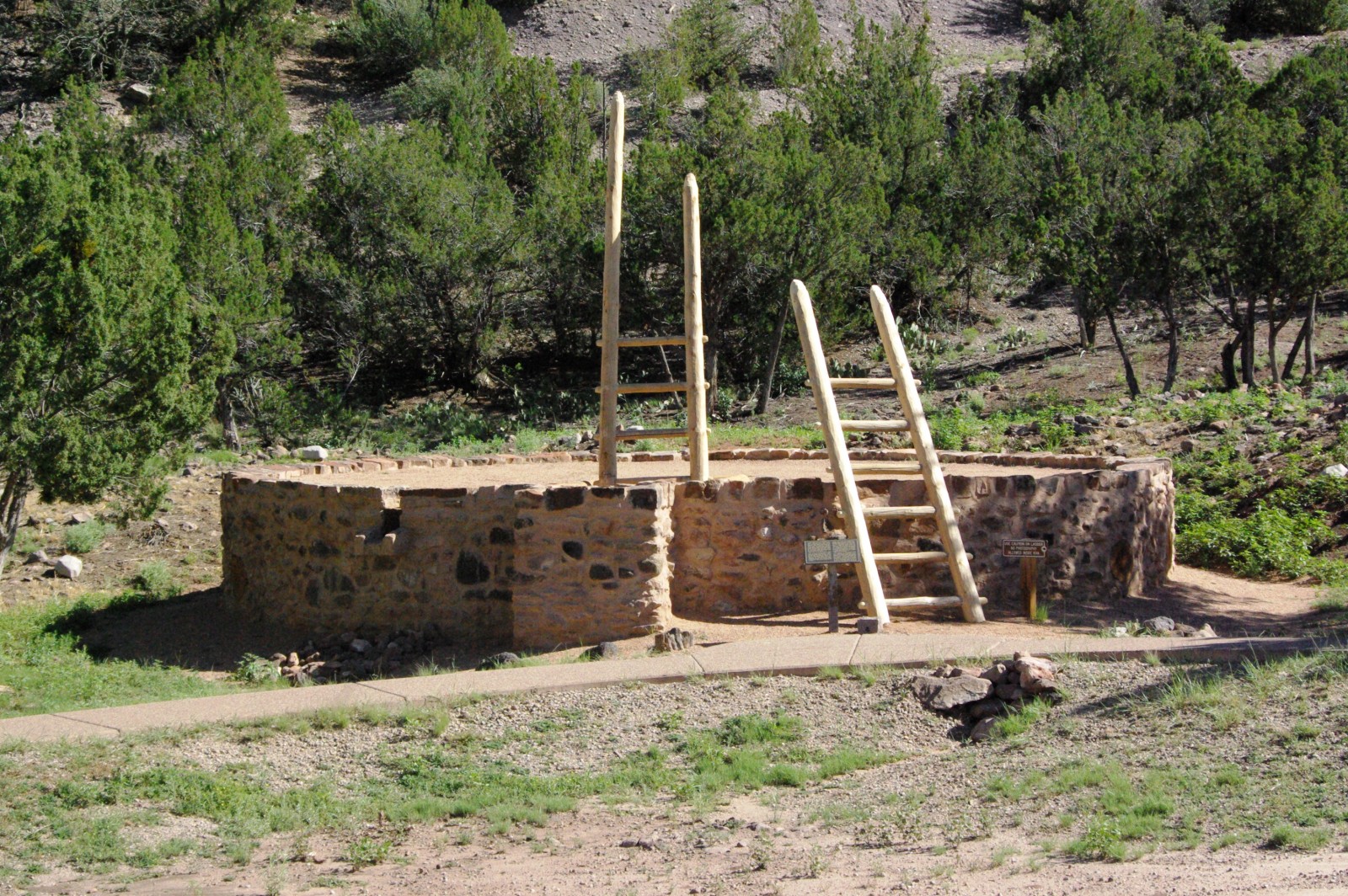Jemez Historic Site
History

Approximately 700 years ago, ancestors of the present day people of Jémez Pueblo (Walatowa), constructed a large pueblo in the narrow San Diego Canyon and called it "Giusewa," a Jémez word that refers to the many hot springs found nearby. They lived peacefully for many generations.
Franciscan missionaries accompanied the Spanish colonization. Their mission was the conversion of Native peoples to Christianity. The Franciscans believed Native religions were demonic, banning Native rituals and destroying many traditional Pueblo religious structures.
Between 1621 and 1625, the Franciscans designed a massive, stonewalled church and convento (priests quarters) at Giusewa. They named their church San José de los Jémez. This mission complex was constructed with Pueblo labor. According to contemporary reports, the construction was "sumptuous and curious" in its design and beauty.
The church is unusual for its massive size and rare, octagonal bell tower. Colorful frescos that once decorated the interior walls were revealed during archaeological excavations in 1921 and 1922.
San José de los Jémez was abandoned by 1640, likely as a result of forced labor and religious persecution by the Spanish.
The Pueblo of Giusewa was occupied until the Pueblo Revolt against the Spanish in 1680, when the Jémez people abandoned it and relocated to more defensible sites in nearby mesas.
Visit Jémez Historic Site and experience the history and beauty of this historic site, which is among the most impressive in the Southwest.
A 1,400-foot interpretive trail winds through the seven-acre site. The visitor center contains exhibits interpreting historic events from the perspective of the Jémez people.


